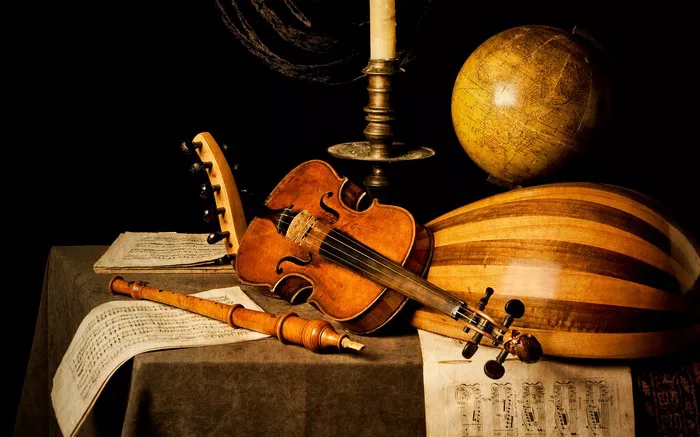Classical music, a timeless genre that has transcended centuries, continues to enchant and captivate audiences worldwide. This article embarks on a journey through the five distinct eras of classical music, tracing its evolution from the Baroque period to the Romantic era. Each era carries its unique characteristics, composers, and innovations, shaping the classical music landscape. Join us as we delve into the rich tapestry of classical music, exploring how it has evolved and left an indelible mark on the world of music and culture.
The Baroque Era: Pioneering the Foundations of Classical Music
The Baroque era, spanning roughly from the early 17th to the mid-18th century, marks the genesis of classical music. During this period, composers laid the foundational principles that would later define classical music. Classical music in the Baroque era was characterized by ornate and intricate compositions, emphasizing harmony, counterpoint, and the use of instruments like the harpsichord and violin.
One of the most prominent figures of the Baroque era was Johann Sebastian Bach, whose compositions exemplify the complexity and grandeur of the time. His works, such as the “Brandenburg Concertos” and “Mass in B Minor,” remain staples of the classical music repertoire to this day.
The Classical Era: Symmetry and Precision
The Classical era, spanning from the mid-18th century to the early 19th century, witnessed a shift in the classical music landscape. Composers of this period, including Wolfgang Amadeus Mozart and Ludwig van Beethoven, sought clarity, symmetry, and precision in their compositions. The hallmark of the Classical era was the development of the sonata-allegro form, which structured compositions with distinct movements and themes.
Mozart, often regarded as one of the greatest classical music composers, crafted masterpieces like “Symphony No. 40” and “The Magic Flute.” Meanwhile, Beethoven’s symphonies, such as the iconic “Symphony No. 9,” brought a sense of emotional depth and grandeur to the Classical era, foreshadowing the Romantic period to come.
The Romantic Era: Passion and Expression
The 19th century ushered in the Romantic era, a period of classical music marked by emotional intensity and individual expression. Composers of this era, such as Johannes Brahms and Pyotr Ilyich Tchaikovsky, aimed to evoke powerful emotions and create deeply personal musical narratives. The Romantic era witnessed the expansion of orchestras, enabling composers to explore new tonal colors and textures.
Brahms, often referred to as one of the “Three Bs” of classical music, alongside Bach and Beethoven, composed symphonies, concertos, and chamber music that conveyed profound emotions. Tchaikovsky, renowned for his ballets like “Swan Lake” and “The Nutcracker,” brought storytelling to the forefront of classical music, using music to narrate tales of love, passion, and tragedy.
The 20th Century: Innovation and Experimentation in Classical Music
The 20th century heralded a period of radical innovation and experimentation in classical music. Composers like Igor Stravinsky and Claude Debussy challenged traditional tonal structures and introduced avant-garde techniques. This era, often referred to as the “Modern” or “Contemporary” period, witnessed a diverse range of musical styles, from neoclassicism to atonality.
Stravinsky’s groundbreaking ballet “The Rite of Spring” shocked audiences with its dissonant chords and irregular rhythms, pushing the boundaries of what classical music could be. Debussy, on the other hand, embraced impressionism, creating dreamlike, evocative compositions like “Clair de Lune” that painted vivid sonic landscapes.
The Contemporary Era: Bridging Tradition and Innovation
As we enter the 21st century, the world of classical music continues to evolve. The Contemporary era, which encompasses the latter part of the 20th century and extends into the present, reflects a fusion of tradition and innovation. Composers like John Williams, Philip Glass, and John Adams have contributed to the modern classical music canon, drawing inspiration from a wide range of musical genres and technologies.
John Williams, celebrated for his film scores, has left an indelible mark on classical music with works like the iconic “Star Wars” theme and “Schindler’s List.” Philip Glass’s minimalist compositions, such as “Koyaanisqatsi,” challenge conventional notions of rhythm and structure. John Adams, known for his contemporary operas like “Nixon in China,” explores political and social themes through classical music.
Conclusion
In conclusion, classical music has traversed a remarkable journey through the five distinct eras: Baroque, Classical, Romantic, 20th Century, and Contemporary. Each era has contributed its unique flavors, from the intricate compositions of the Baroque period to the emotional depth of the Romantic era, the experimentation of the 20th century, and the fusion of tradition and innovation in the Contemporary era.
While the eras may have shifted and evolved, classical music remains a testament to the enduring power of human creativity and expression. It continues to inspire and enchant audiences, bridging the gaps between generations and cultures. As we look to the future, classical music will undoubtedly continue to evolve, leaving an everlasting legacy that resonates with people from all walks of life. Whether it’s the Baroque harmonies or the avant-garde experiments of the 20th century, the beauty and majesty of classical music will continue to captivate hearts and souls for generations to come.

